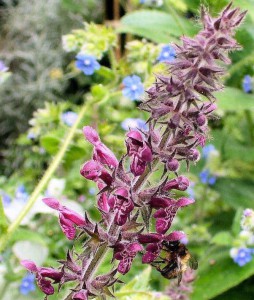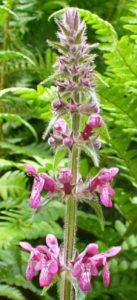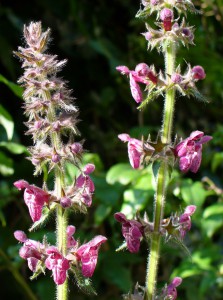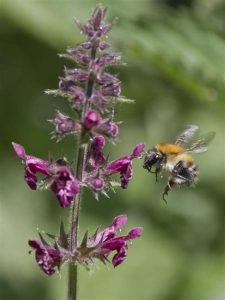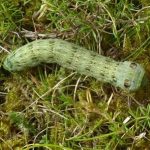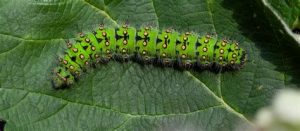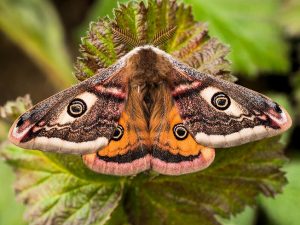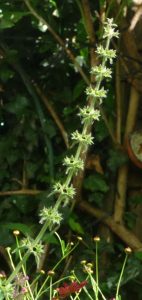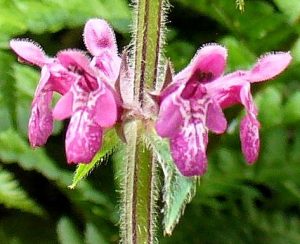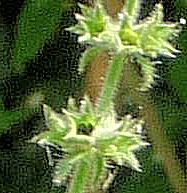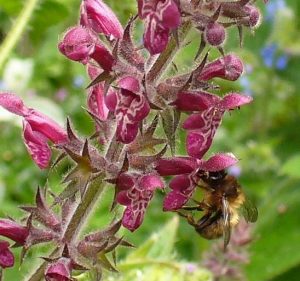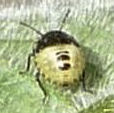HEDGE WOUNDWORT (Stachys sylvatica)
Europe from Norway to Portugal, the Caucasus & the Himalayas, Western Asia
Hedge Woundwort is a member of the mint family. BURGUNDY & WHITE blooms of this perennial herb are like small orchids on long square stems. Underground rhizomes of Stachys sylvatica spread the plant through shady woodlands, hedges & waste ground, where it can grow to a height of 12 to 40 inches.
In gardens it mixes well with other shade-loving wildflowers, & its plantlets when small can be easily pulled up & replanted elsewhere. Cutting some stems back by half may prolong the plant’s season, which is, in the UK, June to October.
Bee’s Favourite
Hedge Woundwort is irresistable to honeybees, bumblebees and other pollinating insects, who visit it throughout its long flowering season. Caterpillars of two moths, the Emperor Hawkmoth & the Small Elephant Hawkmoth, feed on its leaves; slugs & snails leave it alone.
Perennial
The many offspring of our first Hedge Woundwort, which came from an Ecology Centre wildflower sale, reappear each spring. They give the garden the feeling of a woodland glade.
Stachys sylvatica is a prolific maker of seeds. Green tufts are left all along its stems once the flowers are done, with shiny black seeds nestling in each tuft. If these stems are left over winter they provide seed for wildlife.
Other names: All Heal, Archangel, Blue Curls, Brownwort, Carpenter’s Herb, Carpenter’s Weed, Carr Betony, Clown’s woundwort (Gerard), Common Hedge Nettle, Dead Nettle, Grass Nettle, Heal-all, Hedge Stachys, Hercules, Hock heal, Hood weed, Hook weed, Hsia-ku-ts’ao (Chinese), the Husbandman’s Woundwort (Gerard), Lamb’s ears, Panay, Prunel, Red Archangel, Self-heal, Sicklewort, Whitespot, Wild Nettle Grass, Wood betony, Woundwort.
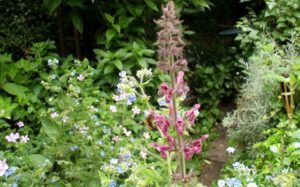
Herbal
‘The distilled water of the flowers is used to make the heart merry, to make a good colour in the face, and to make the vitall spirits more fresh and lively… it has also been classed among the Woundworts good for stanching blood.’
‘An old authority tells us that this herb ‘stamped with vinegar and applied in manner of a pultis, taketh away wens and hard swellings, and inflammation of the kernels under the eares and jawes.’
Maud Grieve, A Modern Herbal, 1931 http://www.botanical.com/botanical/mgmh/w/wouhed38.html
https://monicawilde.com/hedge-woundwort-medicinal-use/
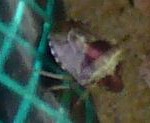
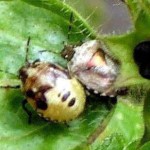
Hedge Woundwort has its own Shieldbug, the Woundwort Shieldbug. The little instars go through four stages before becoming adults.
Illustrations of UK Shieldbugs and their instars by Ashley Wood, available from:
http://www.britishbugs.org.uk/heteroptera/idcards/life_stages.html
